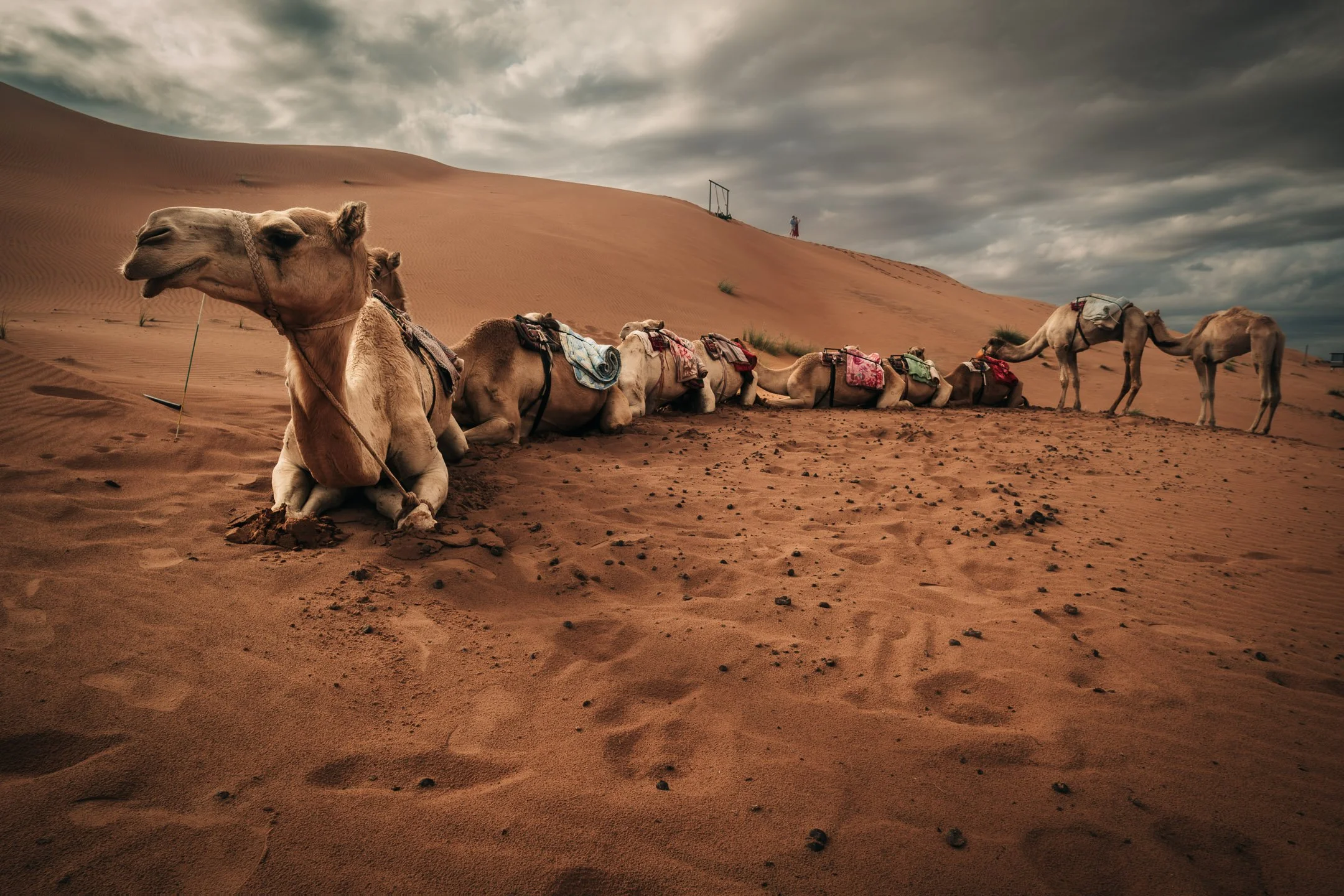a journey through wahiba sands
Visiting Oman, you quickly realize it’s a country that values calm over spectacle. It’s understated, spacious, and grounded in its landscapes. Of all the places I visited, the Wahiba Sands left one of the strongest impressions—not because of anything dramatic, but because of the stillness it offered.
We set out from Muscat early in the morning, leaving behind the city’s low-rise white buildings and winding coastal roads. As we drove south, the scenery gradually changed. Rocky hills gave way to open stretches of land, and eventually, soft waves of sand began to appear along the horizon. A few hours in, we stopped near the edge of the desert, where our guide let some air out of the tires to prepare for the dunes. Then we continued off-road into the heart of the sands.
The Wahiba Sands, also known as the Sharqiya Sands, feel expansive in every sense. The dunes stretch for miles, forming gentle ridges and valleys. The sand itself is fine and warm, shifting between pale gold and deep orange depending on the light. Driving across it feels more like floating than moving. Everything becomes quieter. The wind, the sand, the wide sky—together, they create a kind of space that’s hard to describe.
We arrived at a small desert camp in the late afternoon. It was simple but comfortable: canvas tents, woven carpets, cushions around a fire pit. We were greeted with dates and cardamom coffee, a traditional Omani welcome. There was no signal, no Wi-Fi, and no real need for either. The pace of life in the desert is slower, more focused on being present than being connected.
The pace of life in the desert is slower, more focused on being present than being connected.
As the sun began to set, we climbed one of the taller dunes behind the camp. The view from the top was worth the effort. The desert stretched out in every direction, and the sky gradually shifted from blue to soft pinks and oranges. It was peaceful and oddly grounding, just sitting and watching the light change without needing to do anything else.
Oman from above.
The view from the top was worth the effort.
That night, we gathered around the fire. Our guide shared a few stories about growing up near the sands, and how people still navigate them using the stars and landmarks. The conversation came and went, comfortable in its pauses. With no artificial light around, the sky was full of stars—more than I think I’d ever seen in one place. It made the world feel larger, but in a good way.
The next morning, before sunrise, we rode camels across the dunes. It was quiet except for the soft crunch of hooves in the sand. As the first light appeared, the desert slowly came back to life with warm color. It was a subtle but memorable moment—the kind that stays with you.
Carving quiet paths through the endless dunes of Wahiba Sands — solitude and motion in perfect balance.
Leaving the Wahiba Sands felt like leaving a slower, quieter version of life behind. There’s something about the open space, the natural rhythm of the day, and the lack of distraction that makes you reflect a little more. It’s not a place full of dramatic sights or activities, but that’s exactly what makes it special.
If you ever find yourself in Oman, I’d recommend spending a night in the sands. Not for the photos, or the stories, or even the sunset—though all of those are worth it—but for the quiet. It’s the kind of quiet that’s hard to come by, and harder to forget.







